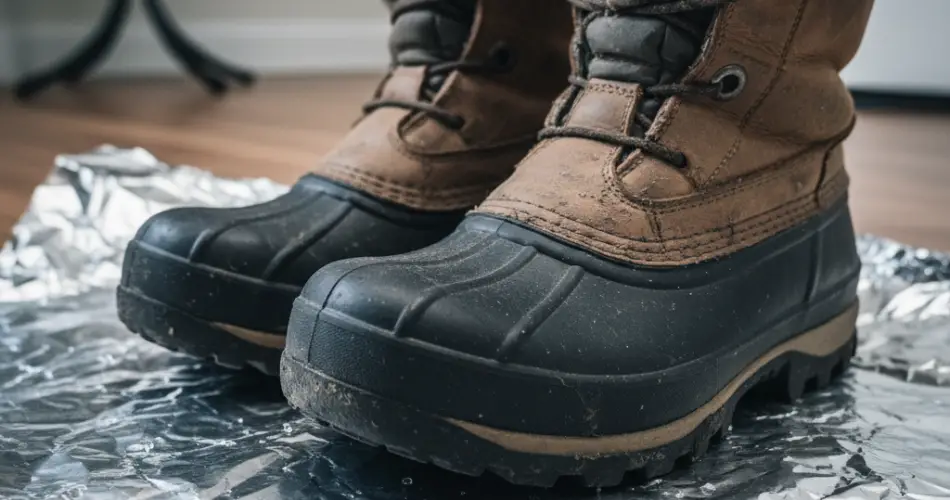When the cold season arrives, one of the most common complaints at home is cold feet. Even if the room feels warm, many people find that their feet remain icy, which can be uncomfortable and even prevent restful sleep. The usual solution is to turn up the heating or sit in front of a stove, but that means higher energy bills. Fortunately, there are natural and cost-free ways to warm your feet effectively—sometimes even better than using a heater.
Why Do Feet Get Cold So Easily?
Our feet are at the farthest point from the heart, which means blood circulation to them can be slower compared to other parts of the body. In winter, the body prioritizes keeping vital organs like the heart and lungs warm, reducing blood flow to extremities. The result: cold toes and heels, even if the rest of the body feels fine.
Wearing thick socks can help, but not always. What many don’t realize is that sometimes the problem is not just the temperature around us, but how we encourage—or restrict—circulation in our own bodies.
A Natural Way to Warm Feet Without Electricity
Instead of relying on heaters or electric blankets, you can stimulate circulation naturally, which warms your feet from the inside out. One simple method is a contrast foot soak—alternating between hot and cold water. This technique costs nothing more than the water you already have at home and works surprisingly well.
Here’s how to do it:
-
Fill one basin with warm (not scalding) water and another with cold water.
-
Place your feet in the warm water for about 2 minutes.
-
Switch to the cold water for 30 seconds.
-
Repeat the process 3–4 times, ending with the warm soak.
This alternating method stimulates blood vessels to contract and expand, boosting circulation. The improved blood flow continues even after the soak, leaving your feet warmer than before—without using any energy-consuming devices.
Gentle Exercise: The Hidden Key to Warm Feet
Another free technique to keep feet warm is movement. Even if you’re sitting at a desk or on the couch, you can do small exercises to increase blood circulation. Try wiggling your toes, rotating your ankles, or flexing and pointing your feet. Just five minutes of gentle movement can warm up cold toes quickly.
If you’re at home, walking barefoot on the floor for a few minutes can also stimulate circulation. It may feel cold at first, but once blood flow improves, warmth will follow naturally.
The Power of Massage
A simple foot massage can do wonders for warmth. By rubbing your feet for a few minutes, you stimulate nerve endings, improve circulation, and relax muscles. You don’t need oils or lotions—though adding a few drops of olive oil or coconut oil can make the massage soothing.
Try focusing on the soles of your feet, working with circular motions from the heels up to the toes. Not only will your feet warm up, but you’ll also feel calmer and more relaxed, making it a great evening ritual before bedtime.
Household Hacks for Extra Warmth
In addition to circulation-boosting methods, there are clever household tricks to keep feet warm for free:
-
Use old newspapers or cardboard under rugs. Floors can draw away heat, but adding a simple insulating layer underneath your rug helps keep warmth where you need it.
-
Layer thin socks instead of one thick pair. This traps warm air between layers, creating better insulation.
-
Elevate your feet. Sometimes feet feel cold simply because blood pools in the legs. Raising them on a pillow while sitting or lying down encourages circulation and warmth.
Why This Is Better Than a Heater
While heaters and stoves warm the air around you, natural methods like soaks, exercise, and massage warm your feet directly from within. That means the effect lasts longer, and you don’t need to pay for electricity or gas.
It’s also healthier for your body. Improving circulation benefits not just your feet, but your overall cardiovascular system. Plus, avoiding excessive artificial heat reduces the risk of dry skin and respiratory issues that often come with running heaters for long periods.
Final Thoughts
Cold feet in winter are uncomfortable, but they don’t need to be solved with expensive energy consumption. By boosting circulation through contrast soaks, gentle exercises, massages, and simple household tricks, you can keep your toes warm for free—and often more effectively than with a stove or heater.
The best part is that these methods are accessible to everyone. They require no special equipment, no electricity, and no added costs. Next time you feel your toes freezing, skip the thermostat and try one of these natural solutions. Your feet—and your energy bill—will thank you.




